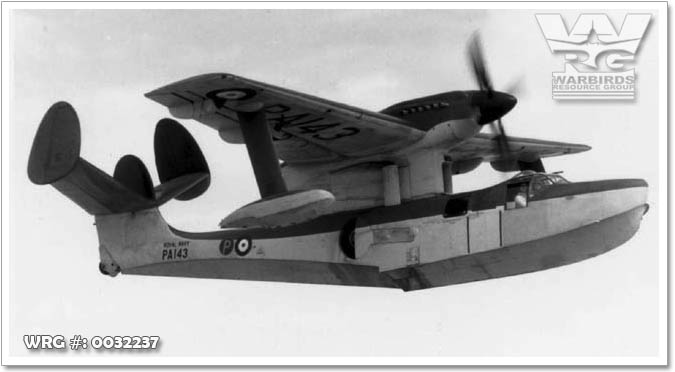BRITISH AVIATION RESOURCE CENTER > EXPERIMENTAL/PROTOTYPES > SEAGULL > PREVIOUS PAGE
Design

[Source: Public Domain]
Supermarine had tested this arrangement in the Type 322 and its capability was demonstrated when test pilot Mike Lithgow flew a Seagull at only 35 miles per hour (56 km/h). In July 1950, a Seagull, flown by Les Colquhoun competing in the Air League Cup Race gained the air-speed record for amphibian aircraft over a 100-kilometre (62 mi) course, by flying at an average speed of 241.9 miles per hour (389.3 km/h).
The hull was a normal frame and longeron design with chines. The tailplane, carried on top of the fin, had a very large dihedral, with smaller fins mounted on its tips perpendicular to its surface. A third fin was later added to the centre after testing of the first prototype had revealed an instability in yaw. This was added to the second prototype while it was still being constructed.

PA143 with the added third fin clearly visible.
[Source: Public Domain]
The crew normally consisted of three. During air-sea rescue work, a Seagull would be able to accommodate a pilot, navigator and medic, plus up to seven survivors
Sources:
Gunston, Bill - The Encyclodepia of the Worlds Combat aircraft, 1976, Chartwell Books, Inc., NY
Wikipedia
BRITISH AVIATION RESOURCE CENTER > EXPERIMENTAL/PROTOTYPES > SEAGULL > PREVIOUS PAGE
